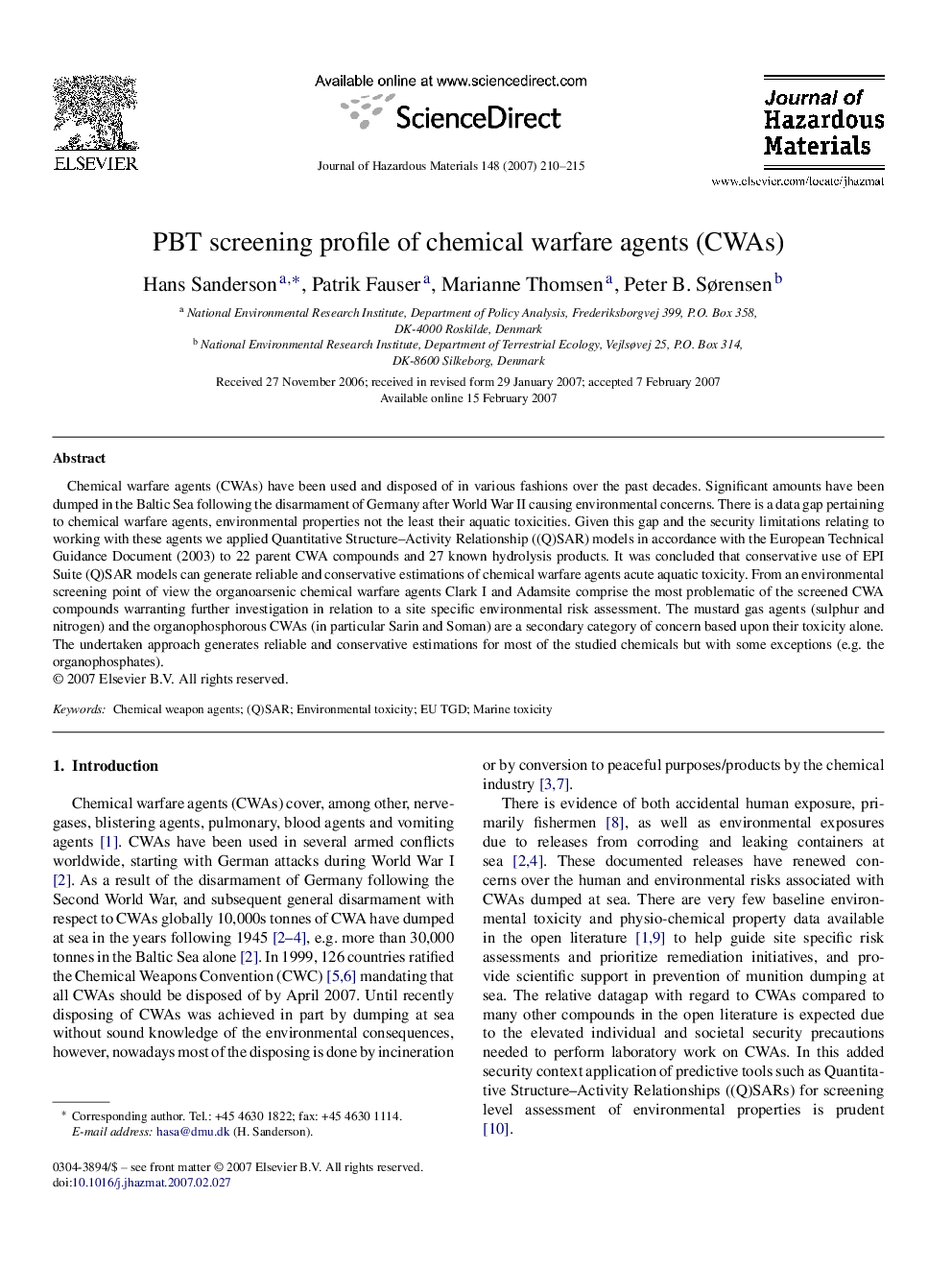| Article ID | Journal | Published Year | Pages | File Type |
|---|---|---|---|---|
| 584396 | Journal of Hazardous Materials | 2007 | 6 Pages |
Abstract
Chemical warfare agents (CWAs) have been used and disposed of in various fashions over the past decades. Significant amounts have been dumped in the Baltic Sea following the disarmament of Germany after World War II causing environmental concerns. There is a data gap pertaining to chemical warfare agents, environmental properties not the least their aquatic toxicities. Given this gap and the security limitations relating to working with these agents we applied Quantitative Structure-Activity Relationship ((Q)SAR) models in accordance with the European Technical Guidance Document (2003) to 22 parent CWA compounds and 27 known hydrolysis products. It was concluded that conservative use of EPI Suite (Q)SAR models can generate reliable and conservative estimations of chemical warfare agents acute aquatic toxicity. From an environmental screening point of view the organoarsenic chemical warfare agents Clark I and Adamsite comprise the most problematic of the screened CWA compounds warranting further investigation in relation to a site specific environmental risk assessment. The mustard gas agents (sulphur and nitrogen) and the organophosphorous CWAs (in particular Sarin and Soman) are a secondary category of concern based upon their toxicity alone. The undertaken approach generates reliable and conservative estimations for most of the studied chemicals but with some exceptions (e.g. the organophosphates).
Related Topics
Physical Sciences and Engineering
Chemical Engineering
Chemical Health and Safety
Authors
Hans Sanderson, Patrik Fauser, Marianne Thomsen, Peter B. Sørensen,
